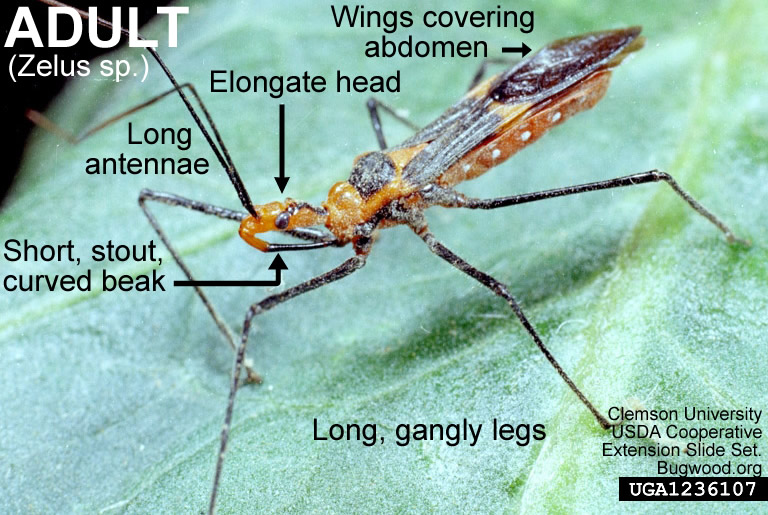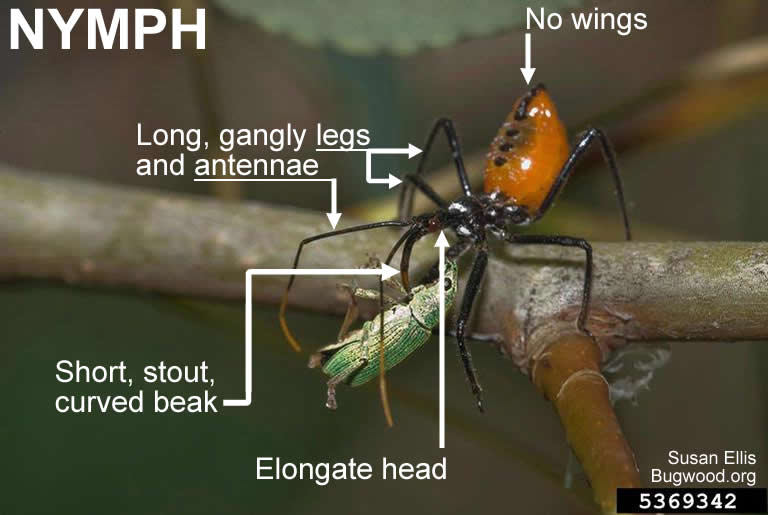Assassin Bug
go.ncsu.edu/readext?562949
en Español / em Português
El inglés es el idioma de control de esta página. En la medida en que haya algún conflicto entre la traducción al inglés y la traducción, el inglés prevalece.
Al hacer clic en el enlace de traducción se activa un servicio de traducción gratuito para convertir la página al español. Al igual que con cualquier traducción por Internet, la conversión no es sensible al contexto y puede que no traduzca el texto en su significado original. NC State Extension no garantiza la exactitud del texto traducido. Por favor, tenga en cuenta que algunas aplicaciones y/o servicios pueden no funcionar como se espera cuando se traducen.
Português
Inglês é o idioma de controle desta página. Na medida que haja algum conflito entre o texto original em Inglês e a tradução, o Inglês prevalece.
Ao clicar no link de tradução, um serviço gratuito de tradução será ativado para converter a página para o Português. Como em qualquer tradução pela internet, a conversão não é sensivel ao contexto e pode não ocorrer a tradução para o significado orginal. O serviço de Extensão da Carolina do Norte (NC State Extension) não garante a exatidão do texto traduzido. Por favor, observe que algumas funções ou serviços podem não funcionar como esperado após a tradução.
English
English is the controlling language of this page. To the extent there is any conflict between the English text and the translation, English controls.
Clicking on the translation link activates a free translation service to convert the page to Spanish. As with any Internet translation, the conversion is not context-sensitive and may not translate the text to its original meaning. NC State Extension does not guarantee the accuracy of the translated text. Please note that some applications and/or services may not function as expected when translated.
Collapse ▲- Common Name: Assassin Bug
- General Category: Beneficial Predator
- Taxonomic Classification: Hemiptera: Reduviidae
- Scientific Name: Many species)
Description
These bugs are very general in their feeding habits. Like all true bugs (Hemiptera) these predators have a beak. To feed, they often grasp their prey with their front legs, then swing their beaks up from under their bodies to insert into the prey. They inject digestive enzymes through the beak that soon render the prey immobile, after which they suck up the digested insides. They can also inflict a painful bite if mishandled.


Identification
Review the images for tips on how to identify these predators.
Adults
Like the predatory bugs, assassin bugs have beaks that are at least twice as thick as their antennae. However, the beaks are shorter, stouter, and curved. The beak tip fits into a groove between the front legs. The front legs may be raptorial, or grasping, like that of praying mantids. They have long, gangly legs and antennae that can sometimes make them appear spider-like. These are relatively large insects, ranging from about a third to over one inch in length.
Nymphs
Like adults, except lacking wings. Abdomen may be curved upwards, especially in younger nymphs.
Value in Pest Management
These bugs are common natural control agents of caterpillars and a variety of other plant feeding insects. When abundant, they likely contribute to pest population regulation. They are not sold commercially.
Origin and Distribution
Native, throughout North America.


